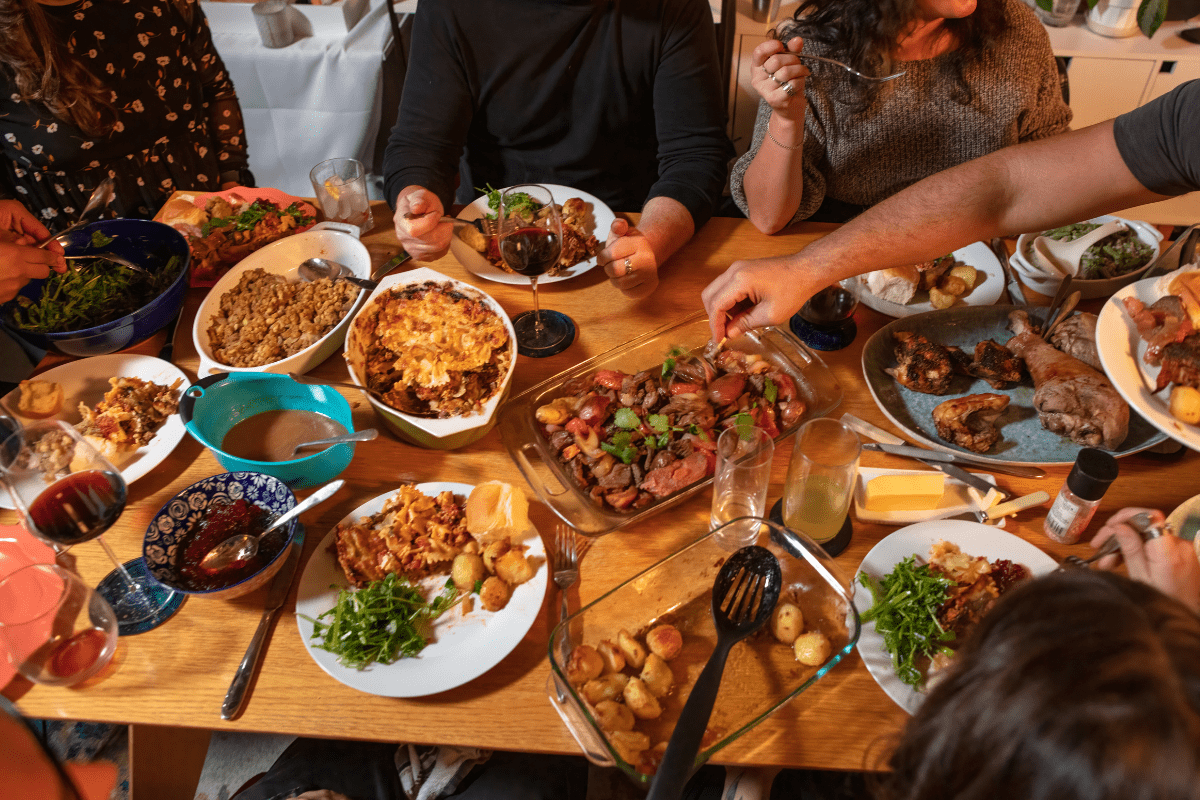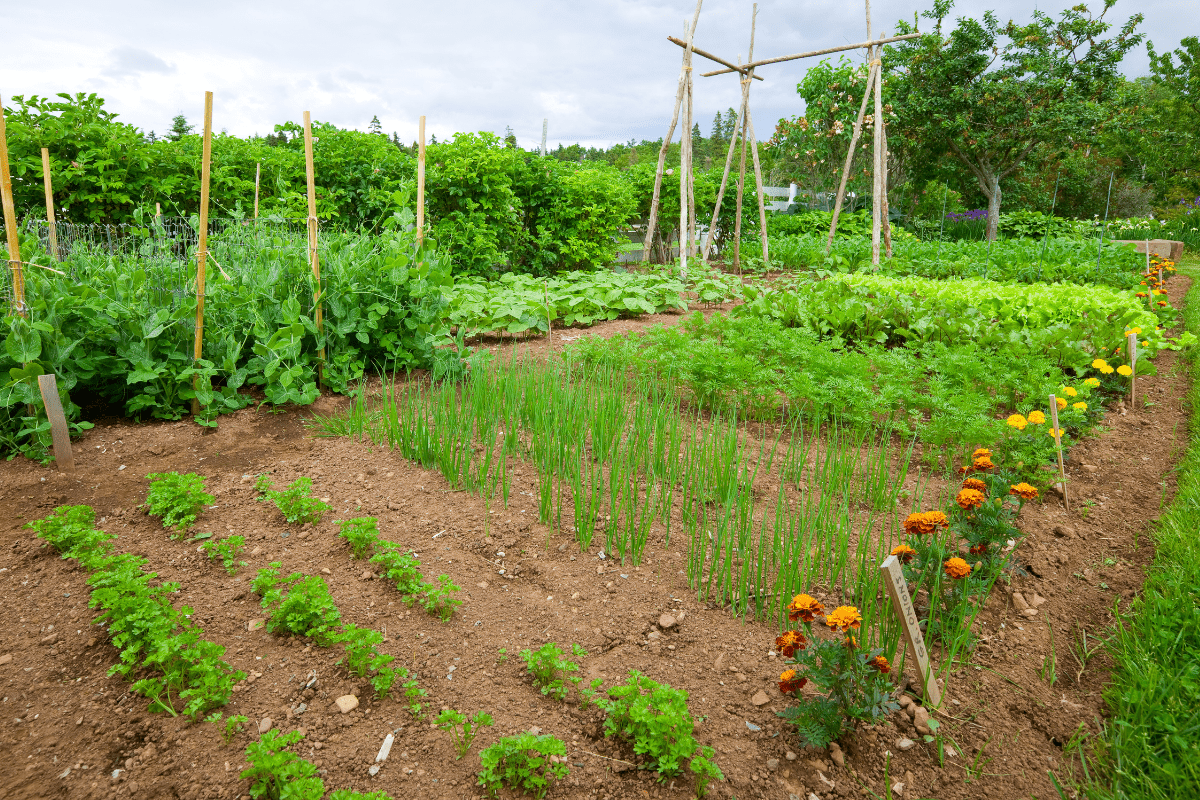Let me tell you about the time I tried to explain a Runza to my California cousin. "It's like a Hot Pocket," I said, "but actually good, and invented way before Jim Gaffigan made frozen pastries famous." That blank stare told me everything I needed to know about how little the world knows about Nebraska's surprisingly distinctive food scene.
The runza rules Nebraska (and for good reason)
Nebraska's most iconic creation isn't corn or beef, though we've got plenty of both. It's a yeasted bread pocket stuffed with seasoned ground beef, onions, and cabbage that locals guard more jealously than their Cornhusker season tickets.
The Runza arrived with German-Russian immigrants in the 1870s, who originally called it bierock or krautrunz. These folks were fleeing Czar Alexander II's military conscription requirements and apparently decided the best way to start fresh in America was to stuff meat into bread. Smart move, honestly. The handheld meal made perfect sense for farm workers who couldn't exactly sit down for a three-course lunch while harvesting wheat.
From immigrant staple to fast food empire
Sally Everett took this immigrant comfort food and turned it into an empire when she opened her first stand in Lincoln in 1949. Today, the Runza restaurant chain operates 85 locations across Nebraska and neighboring states, though most outsiders still give you that confused look when you mention it.
Making a proper Runza requires more technique than you'd think. The sweet yeast dough needs milk and eggs for richness, and you've got to let it rise twice for the right texture. The filling demands 80/20 ground beef (don't even think about using that lean stuff), fresh cabbage rather than sauerkraut, and proper draining to avoid the dreaded soggy bottom. Bake at 350°F until golden brown, and you've got Nebraska in edible form.
The chain even runs Temperature Tuesday promotions where the day's temperature determines the sandwich price. When it hits 95°F in July, that Runza costs 95 cents. When it's -5°F in January? Well, they cap it at free, because Nebraskans aren't completely insane.
More Nebraska originals than you'd expect
While the Runza gets most of the glory, Nebraska's culinary inventors didn't stop there. The state has birthed several dishes that make other Midwesterners jealous, or at least confused.
The Reuben's real birthplace
Despite what New Yorkers claim, the Reuben sandwich was born in Omaha's Blackstone Hotel in 1925. According to the Nebraska State Historical Society, grocer Reuben Kulakofsky created it during a late-night poker game. The combination of corned beef, Swiss cheese, sauerkraut, and Russian dressing on rye bread apparently helped him win more hands, or at least stay awake longer.
The Blackstone District still celebrates this creation, and honestly, the Nebraska origin story makes way more sense than the New York version. We had the German immigrants, the sauerkraut tradition, and the late-night card games. Case closed.
Deep-fried grilled cheese? Yes, please
In the 1950s, someone at King's Food Host restaurants in Lincoln looked at a perfectly good grilled cheese sandwich and thought, "This needs more calories." Thus was born the Cheese Frenchee: a grilled cheese dipped in egg batter, rolled in crushed cornflakes, and deep-fried until crispy.
It sounds like something you'd invent at 2 AM after questionable decisions, but it's surprisingly delicious. The cornflake coating adds this perfect crunch, and the molten cheese inside reaches new levels of gooey perfection. A few Nebraska diners still serve them, usually with a side of "are you sure you want to do this to your arteries?"
Dorothy Lynch: Nebraska's secret sauce
Dorothy Lynch created her sweet-tangy tomato-based dressing in St. Paul, Nebraska, during the 1940s, and Nebraskans have been putting it on literally everything since. We're talking salads, sure, but also pizza, chicken strips, french fries, and occasionally straight from the bottle when nobody's looking.
The original recipe combines tomato soup with oil, vinegar, sugar, and celery seed. The key is letting it sit overnight in the fridge, which apparently activates some kind of Nebraska magic that makes it irresistible.
Immigration shaped every bite
Nebraska's food story can't be told without talking about the waves of immigrants who brought their recipes and adapted them to prairie life. These weren't fancy restaurant chefs; they were farmers and laborers who needed filling, portable food that could survive a day in the fields.
German-Russians brought the goods
The German-Russians who arrived in the 1870s didn't just bring the Runza. They established sausage-making traditions, perfected sauerkraut fermentation in root cellars, and developed bread-baking techniques that could work with whatever grain was available. They settled primarily around Sutton and Lincoln, creating pockets of food culture that persist today.
These communities maintained their food traditions partly out of nostalgia but mostly out of practicality. When you're farming the prairie, you need hearty food that sticks to your ribs. A delicate French pastry wasn't going to cut it after dawn-to-dusk wheat harvesting.
Czech communities and their kolaches
Nebraska boasts the highest Czech population per capita in America at 5.5%, and nowhere is this more evident than in the tiny town of Verdigre (population 575), self-proclaimed "Kolache Capital of the World."
These sweet yeast pastries filled with poppy seed, prune jam, or cream cheese require patience and precision that Czech grandmothers guard like state secrets. The preparation involves:
- Hand-grinding poppy seeds
- Two careful rising periods
- Perfect posipka (streusel topping)
- Traditional fruit fillings from backyard trees
- Baking temperature precision
- Generational guilt if you mess up
Verdigre Bakery still uses recipes unchanged since the 1880s, and the annual Kolach Days festival draws thousands who come for the pastries but stay for the accordion music and Czech beer.
When agriculture becomes cuisine
You can't understand Nebraska food without grasping the sheer scale of our agricultural output. This isn't some quaint farm-to-table movement; it's more like farm-to-every-table-in-a-three-state-radius.
Beef: It's what's for dinner (seriously, every dinner)
Nebraska ranks fourth nationally in beef production with 6.05 million cattle. Cherry County alone maintains 166,000 head, making it America's top beef cow county. That's roughly 250 cows per human in the county, which explains why vegetarian options are sometimes just "you can pick the bacon off."
Our approach to beef differs from other states. While Kansas obsesses over barbecue and Texas argues about brisket, Nebraska keeps it simple. Salt, pepper, high heat, done. When your beef quality is this good, drowning it in sauce is practically criminal. This philosophy shows up everywhere from Omaha's high-end steakhouses to small-town cafes where the daily special is always some cut of beef.
Corn: Not just for eating anymore
As America's third-largest corn producer, Nebraska harvested 1.802 billion bushels in 2024. But here's the kicker: 40% of that corn goes straight to feeding our cattle. It's a beautiful cycle that creates the corn-fed beef Nebraskans swear tastes better than anything else.
We're also number one in white corn production and second in popcorn, which North Loup has celebrated with Popcorn Days since 1901. That's 124 years of free, all-you-can-eat popcorn, making it Nebraska's longest continuously running festival and probably the best deal in America.
The numbers that matter
Agriculture contributes 10.6% of Nebraska's GDP and generates $31.6 billion in cash receipts. With 91% of our land devoted to farming across 44,300 farms, you could say we're pretty committed to this whole food production thing.
Yet somehow, Nebraskans spend over $5 billion annually on food from outside the state. Only 0.06% of farm cash receipts come from locally grown food sales, which seems crazy when you're literally surrounded by food production. It's like living in a brewery and ordering wine.
East meets west (and they're both delicious)
Nebraska's food scene splits along geographic lines like some kind of culinary Mason-Dixon line. Eastern urban areas embrace innovation and international cuisines, while western regions stick to what works: beef, and lots of it.
Eastern sophistication in Omaha and Lincoln
Omaha's restaurant scene would surprise anyone who thinks Nebraska dining stops at corn and steaks. Block 16 earned recognition from Alton Brown as one of the nation's top five burger joints, serving creations like the croque garçon burger with rangoon fries that would make a French chef either proud or deeply confused.
The city's historic steakhouses maintain their legendary status. Gorat's Steakhouse, Warren Buffett's favorite haunt for over 70 years, serves Italian specialties alongside prime beef. The Drover does whiskey-marinated steaks that'll make you question every other steak you've ever eaten. Brother Sebastian's creates a monastery-themed atmosphere, because nothing says "holy cow" like a perfectly cooked ribeye.
Lincoln, as the birthplace of both Runza and the Cheese Frenchee, holds special status in Nebraska food innovation. The city also hosts Modern Love, opened by vegan cookbook author Isa Chandra Moskowitz. "Swanky vegan comfort food" in Nebraska? Times really are changing.
Western traditions and ranch culture
Cross the 100th meridian heading west, and Nebraska's food culture shifts dramatically. Out here in the Sandhills, which cover 19,300 square miles but hold only 1.2% of the state's population, beef isn't just a preference—it's basically a food group.
Western Nebraska embraces dishes that would make city folks squeamish. Rocky Mountain Oysters (deep-fried bull testicles) appear on menus with straight faces and cocktail sauce. They taste better than you'd think, especially after a few Nebraska-brewed beers.
The region's Mexican food deserves special mention. Thanks to generations of agricultural workers, northwestern Nebraska towns serve what experts call "extraordinarily good Mexican food." Places like Los Jalapenos in Lexington serve authentic dishes where tortillas replace silverware and Spanish is the primary language.
Ole's Big Game Steakhouse in Paxton, established in 1933, displays 200 stuffed animals while serving T-bones and ribeyes to Interstate 80 travelers. It's like eating dinner in a taxidermy museum, which is either your dream or nightmare depending on your tolerance for glass-eyed elk watching you eat.
Where to eat like a true Nebraskan
Finding authentic Nebraska cuisine means knowing where locals actually eat, not just where tourists stop for Instagram photos.
Must-visit establishments
Start with the classics. Gorat's in Omaha hasn't changed much since the 1940s, and that's exactly the point. The steaks are perfect, the Italian dishes surprisingly good, and you might spot Warren Buffett at his regular table.
For the full Runza experience, hit any Runza location on Temperature Tuesday. Order the original with onion rings and a side of ranch (Nebraskans put ranch on everything, deal with it).
11-Worth Cafe in Omaha serves chicken-fried steaks "the size of your head," which sounds like hyperbole until you see one. Weekend brunch lines stretch around the block, filled with hungover Creighton students and locals who know what cures what ails you.
Hidden gems worth finding
Potter Sundry maintains its 1916 soda fountain where the Tin Roof Sundae was invented. The ice cream creation got its name from the shop's decorative tin ceiling, and they still serve it exactly the same way.
Kinaara in Omaha offers Kerala dishes with beef specials uncommon in many Indian restaurants. Chef Ashish Sathyan creates what critics call "some of the most singular Indian food in the city," proving Nebraska's international food scene extends far beyond German and Czech influences.
For Czech pastries, bypass chain bakeries and head straight to Verdigre Bakery. They produce hundreds of kolaches daily using those unchanged 1880s recipes, and the difference is immediately obvious.
Festivals that celebrate food (and give you free samples)
Nebraskans don't just eat their cultural foods; they throw parties around them. These festivals offer the best opportunity to sample authentic dishes while pretending you understand polka music.
The big annual celebrations
Kool-Aid Days in Hastings every August celebrates Edwin Perkins' 1927 invention with the world's largest Kool-Aid stand. The festival includes Kardboard Boat Races (yes, spelled with a K), because nothing says Nebraska like racing soggy cardboard boats while hopped up on sugar water.
Wilber's Czech Festival spans 58 years of wood-fired pork, jaternice sausage, and enough kolaches to feed a small nation. The festival includes:
- Traditional Czech beer garden
- Kolache-eating contests
- Accordion marathons
- Duck races (live ducks)
- Czech royalty pageant
- Polka bands on three stages
North Loup Popcorn Days offers genuinely free, all-you-can-eat popcorn for three days. After 124 years, they've perfected the art of popping corn and watching people eat genuinely shocking amounts of it.
Making Nebraska food at home
Want to recreate Nebraska cuisine in your own kitchen? Here's what you need to know to avoid common mistakes that'll get your Nebraska card revoked.
Runza success secrets
The biggest Runza mistakes home cooks make:
- Using lean ground beef (flavor disaster)
- Substituting sauerkraut for fresh cabbage
- Overfilling the pockets
- Not draining the meat properly
- Forgetting to seal edges completely
- Skipping the second rise
- Using store-bought frozen dough
The dough needs time and attention. That second rise isn't optional—it's what creates the perfect texture that holds up to the filling without getting soggy. Drain that beef mixture thoroughly, or you'll end up with Runza soup in a bread bowl.
Dorothy Lynch from scratch
Making Dorothy Lynch dressing seems simple until you realize Nebraskans can detect imposters immediately. Use regular condensed tomato soup, not the healthy version. Let it sit overnight in the fridge—this isn't negotiable. The overnight rest somehow transforms basic ingredients into the tangy-sweet perfection Nebraskans crave.
Czech kolache perfection
Traditional kolaches require patience most Americans don't possess. The sweet yeast dough needs warm (not hot) milk, careful kneading, and two rising periods. Traditional fillings include ground poppy seed mixed with sugar and milk, prune butter (povidla), or sweetened cream cheese with vanilla.
The posipka (streusel topping) makes or breaks a kolache. Mix flour, butter, and sugar until it resembles coarse crumbs, then sprinkle generously. Stingy streusel is practically a crime in Czech communities.
What makes Nebraska cuisine special
After all this, you might wonder what truly sets Nebraska food apart from neighboring states. It's not just the specific dishes, though the Runza alone would be enough. It's how immigration patterns, agricultural dominance, and geographic isolation created something unique.
Iowa shares our corn production, but they feed it to pigs while we feed it to cattle, creating completely different food cultures. Kansas obsesses over barbecue while we prefer simple preparations that showcase beef quality. Both states serve chili with cinnamon rolls, but only Nebraska institutionalized it in school lunch programs.
Nebraska created dishes found nowhere else: the Runza, Cheese Frenchees, Butter Brickle ice cream, and Dorothy Lynch dressing remain strictly Nebraskan inventions. These aren't accidents but products of specific cultural moments when immigrants met prairie agriculture.
Food critic Sarah Baker Hansen, who covered Omaha's dining scene for eight years, notes how established restaurants can "fade into the background, overwhelmed by the new." Yet Nebraska's traditional eateries persist through generations, suggesting our food culture values consistency over trends.
The truth is, Nebraska's cuisine tells the story of people making the best of what they had, then realizing what they had was pretty great all along. From German-Russians stuffing cabbage into bread to Czech grandmothers perfecting kolaches to ranchers grilling steaks under endless skies, Nebraska food is ultimately about turning simple ingredients into something worth celebrating.
And if that celebration happens to include deep-fried grilled cheese sandwiches and Temperature Tuesday Runza deals? Well, that's just the Nebraska way.





